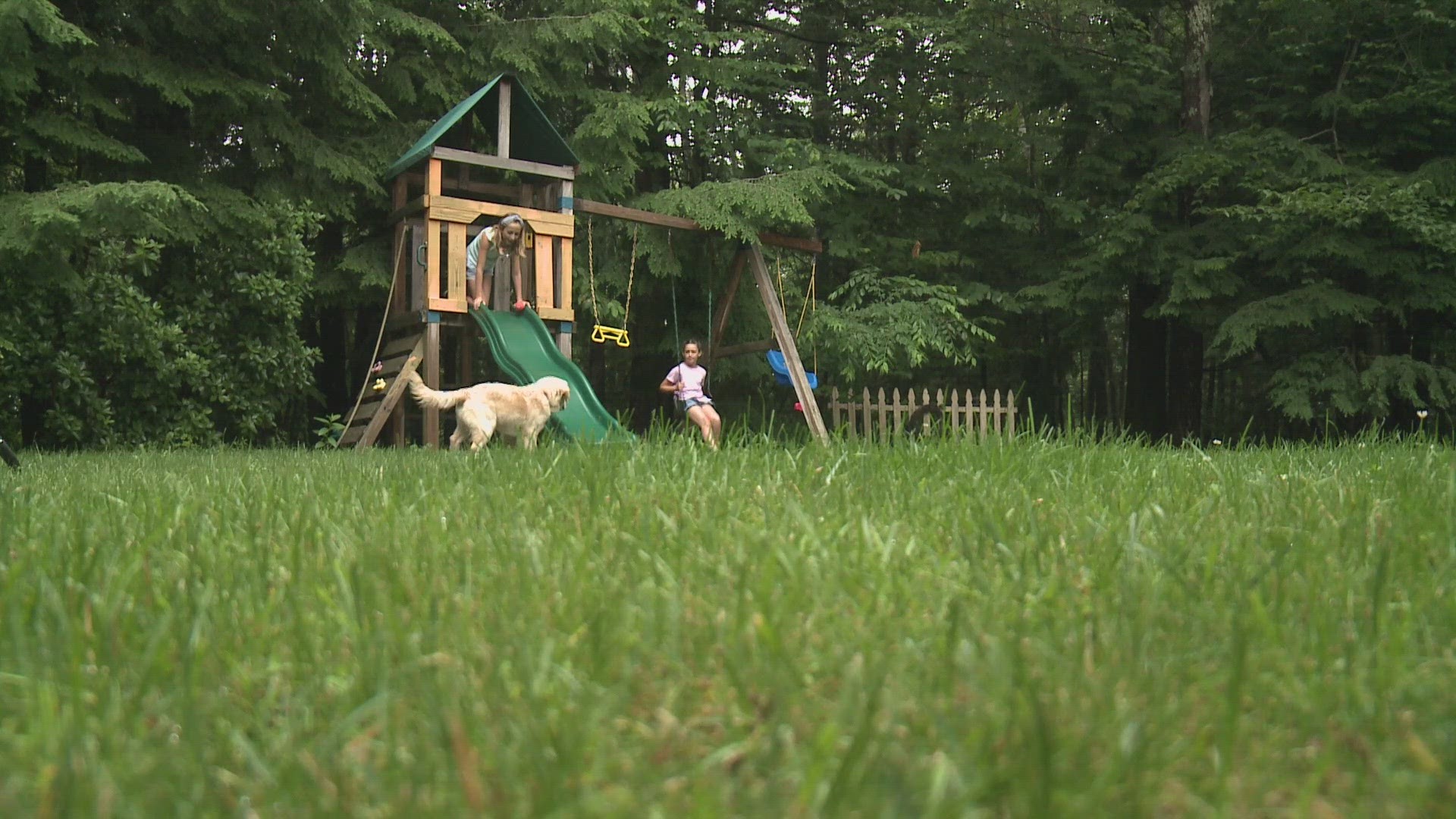CUMBERLAND, Maine — Exposure to deer ticks this time of year is particularly dangerous. That's because these tiny ticks, known as nymphs, that cause most cases of Lyme disease, are out.
According to the U.S. Centers for Disease Control and Prevention, kids have the highest rate of getting Lyme and getting other diseases from a tick bite. The reason? Kids are most at risk for tick-borne illness because they are less likely to notice or report a tick bite to an adult and often play in areas where ticks are active.
Jenny Burnell's 11-year-old daughter Hadley and her best friend Lila love playing outdoors. That includes romping around in the grass with the family's new puppy named Casco.
When the girls head inside, Jenny immediately checks for ticks that carry tick-borne illnesses, especially young deer ticks or nymphs, which are the size of poppy seeds.
"A quick check of their hair, you know, hidden spots, in the socks in the shoes, at night just daily tubs and shower," Burnell explained.
Dr. Kristy Perkowski is a pediatrician at Northern Light Mercy Dr. Harry E. Davis Pediatric Center.
She said daily tick checks are the first line of defense against Lyme and other diseases. But what if you find an embedded tick? She said to remove it immediately using fine-tipped tweezers and determine what kind of tick it is. Your child's provider will also want to know how long the tick may be been attached.
The longer the tick is attached, the greater the risk it could transmit Lyme, so making that determination with your doctor is important.
Perkowski recommends treatment within 72 hours of removing a tick with a single dose of oral antibiotics. She also advises to be on the lookout for other symptoms, the most common in children is a rash, that presents differently than a classic bullseye.
"A red expanding rash that is usually not itchy or bothering them in any way and is usually the site of the tick bite, but could appear in other places as well," Perkowski explained.
Some patients never get a rash but can have flu-like symptoms and joint pain. With treatment, most children recover from Lyme disease within six months of diagnosis, according to a recent study from the National Institute of Allergy and Infectious Diseases, published in March in Pediatric Research.
Burnell's Dad was diagnosed with Lyme six years ago and still has lingering symptoms.
"I don't want to see my kids suffer like he did, and we have to be diligent because they are not going away," Burnell added. Keeping her kids safe from being exposed to a disease, that has hit so close to home.
More NEWS CENTER Maine stories

